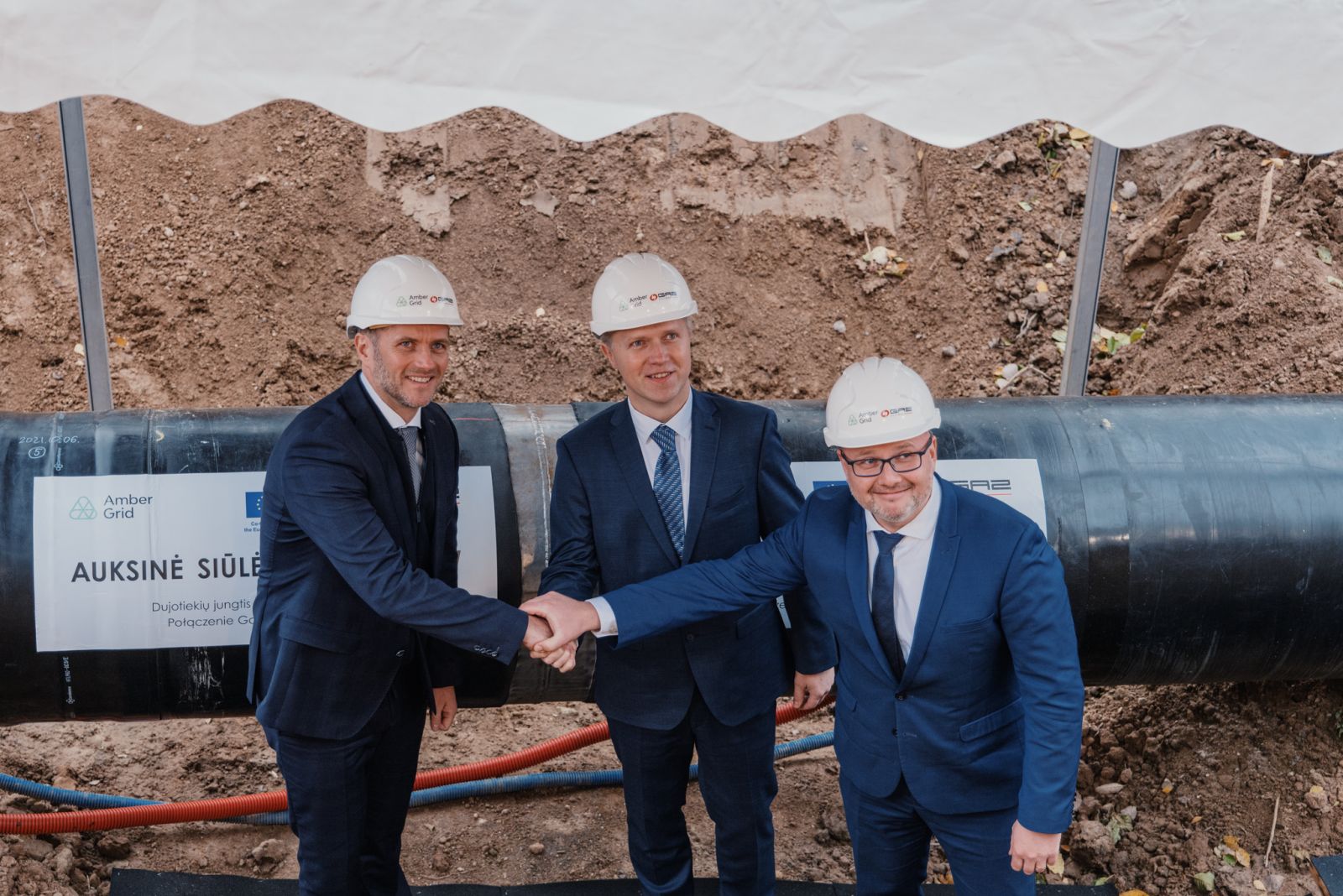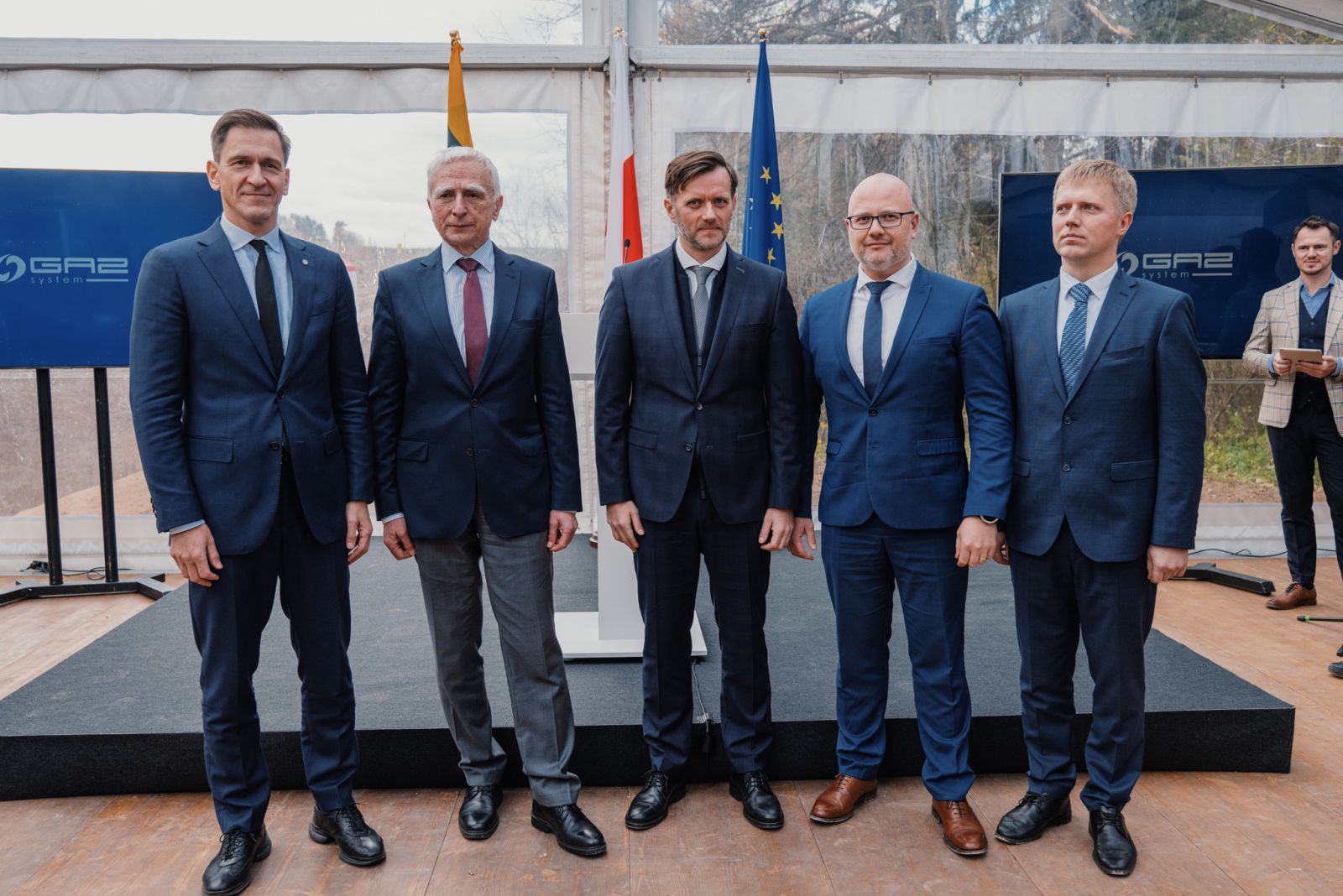Following construction of the Gas Interconnection Poland-Lithuania (GIPL) on both sides of the Polish-Lithuanian border, a symbolic Gold Weld was welded, marking the physical connection of the gas transmission systems of the two European Union countries. Welding the gold weld was one of the key milestones in the installation of the gas pipeline connecting the gas markets of the Baltic region and the European Union.
“The GIPL, which integrates the energy ‘island’ of the Baltic States and Finland into the single EU gas market, is in the final stage of construction. Energy independence is being strengthened by powerful link with the European continent. For decades, the creation of interconnection between Lithuania and Poland has been the missing link in the overall picture of our energy infrastructure. With more sources of gas supply, we will be able to ensure the security and reliability of gas supply, we will be freer to decide where to get energy resources from, and we will be able to react more flexibly to gas market price changes. The GIPL will also open up opportunities to make more use of Klaipėda LNG terminal, and in the future it will be adapted for the transmission of green hydrogen,” said Dainius Kreivys, Minister of Energy of Lituania.
"We are connecting the gas transmission systems of Poland and Lithuania and next year gas will flow this way. The GIPL will end the gas isolation of the Baltic States and facilitate free choice of supplier as well as purchase of raw material at competitive market prices. The interconnector is also an important element of the strategy for diversification of gas supplies to Poland. Together with the investments implemented by GAZ-SYSTEM, such as the Baltic Pipe, the expansion of the LNG Terminal in Świnoujście and the interconnector with Slovakia, it will help Poland and other countries in our region to become independent from the dictates of the Russian monopolist " - said Minister Piotr Naimski, Government Plenipotentiary for Strategic Energy Infrastructure.
“The physical connection of the Lithuanian and Polish gas transmission systems is a historic moment, as Lithuania’s infrastructure is finally being integrated into the gas infrastructure of the rest of Europe. This opens up greater opportunities for Lithuania to supply gas and, looking ahead, opportunities to plan the transformation of the network in preparation for hydrogen and other green gases era. The progress of the GIPL construction works in Lithuania is at 95 per cent – we have completion certificates for three of the four project stages. We are moving rapidly towards the end of this strategic energy project. We are planning that the market will be able to use the pipeline in 2022,” said Amber Grid CEO Nemunas Biknius.
"The Poland-Lithuania interconnector is one of GAZ-SYSTEM's several large infrastructure projects that we are currently finalising. The advancement of construction work on section 343 km of the gas pipeline in Poland is above 90%. Today's symbolic ceremony for the implementation of the golden weld on the Polish-Lithuanian border heralds the completion of this project, which we are planning for the beginning of the Q3 2022", - said Tomasz Stępień, CEO of Gaz-System.
The total length of the international gas pipeline interconnection between Lithuania and Poland is 508 km, with 165 km in the territory of Lithuania and 343 km in Poland. The gas pipeline diameter is 700 mm. On the Lithuanian side, the starting point of the gas pipeline interconnection is next to the Jauniūnai gas compressor station, located near Vilnius. In Poland, the gas pipeline will be connected to the Holowczyce gas compressor station.
Construction of the gas pipeline began in both countries in 2020. In Lithuania, 95 per cent of the pipeline construction work has already been completed. In Poland work is going according to plan and is 90 per cent complete. GIPL installation work. After overcoming technological challenges as well as the challenges posed by a global pandemic, complex sections of the gas pipeline were built under the largest rivers in Lithuania and Poland in accordance with environmental protection requirements.
The GIPL project costs are approximately EUR 500 million, with more than 60 per cent of the funds for the implementation of this project provided by the European Commission. The Latvian and Estonian gas transmission system operators are also contributing to the financing of the project.
Shortly after completion of the GIPL, the interconnection will be launched in mid-2022, with the exact date still to be coordinated between TSOs when the construction of all infrastructure will be close to commissioning. Once the gas interconnection is fully completed, capacity will be created to transport up to 27 terawatt-hours (TWh) of natural gas per year to the Baltic States, and up to 21 TWh per year to Poland, and the Baltic gas markets will become part of the single EU gas market.
A European Union project of common interest, Gas Interconnection Poland-Lithuania (GIPL) is being implemented by the gas transmission system operators of both countries: Amber Grid and Gaz-System.




